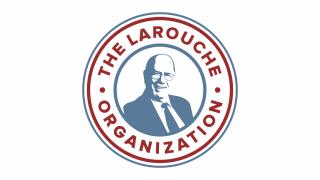Feb. 10, 2025 (EIRNS)—The rapidly moving events of current history can make us uncertain how the pieces fit together. Where are the events coming from? Why do they appear as they do? What connects the dots?
In Book VII of his Republic, composed more than two millennia ago, Plato recounts an allegory that can help us here. He tells the story of a cave, in which a group of prisoners is secured such that they are forced to face a wall, the only thing within their field of view. Upon this wall, shadows are cast by objects passing in front of a fire behind the prisoners. They see the shadows, not the objects themselves. And reverberating from the wall they hear echos, reflections of sounds actually made behind them. If such prisoners tried to understand the world on the basis of such distorted shadows, could they determine the true situation?
How do we, as people, rise above our senses—as no animal can—to hypothesize physical principles giving rise to phenomena? How do we enter the complex domain of cause?
Pierre de Fermat’s discovery of the least time principle of light propagation—the hypothesis that even when it bends in refraction, light moves only on paths along which it goes from one point to another faster than by any other path—is a powerful example of the difference between trying to understand the world as a series of individual points, to comprehend it instead as the playing out of universal principles. Fermat rejected the wacky physical analogies of Descartes, who tried to understand each change in light’s path as an event, in favor of a single cause. (Learn more here.)
What are the principles at play in the world today? How does their conflict result in the eruption of what seem to be “points” on the timeline of history, but which are actually singularities in a continuous process?
Consider a few examples:
On Monday evening, Trump demanded that Hamas release all of its hostages by noon on Saturday, Feb. 15. He even had an “event” at hand to point to as justification for this seemingly new policy: the gaunt appearance of the most recently released Israelis, whom Trump said looked “like Holocaust victims.” (By what means could one ensure plausible ignorance of the deplorable conditions of misery and torture inflicted on the Palestinians, both in Israeli captivity and in Gaza in general?) This demand threatens the very ceasefire plan he helped to bring about! (If Hamas believes the ceasefire arrangement will not hold, what is their incentive to continue to release its prisoners?) Did Trump change his mind? Israel continues to destroy Palestinian life, both by preventing aid from reaching Gaza, and by its actions in the West Bank, with the Jenin refugee camp the latest victim. Trump’s doubling down on his proposal to take Gaza and remove the Palestinians has forced Saudi Arabia to draw a line in the sand, absolutely opposing any recognition of Israel in this circumstance.
What connects the dots?
Or take South Africa. Trump’s executive order laying out why he is ending U.S. assistance to the nation points to an inciting event—the issue of land expropriation—but the real issue is geopolitical: Trump’s anti-BRICS orientation and his anger at South Africa’s case against Israel at the International Court of Justice.
Progress toward determining what connects the dots is coming in the form of revelations about secret government activities, as in the case of USAID. And a major step was taken toward making possible a process of discovery of who (or what) has determined U.S. policy—a cloture vote to end debate on the nomination of Tulsi Gabbard as Director of National Intelligence passed 52-46, setting up the Senate to vote on her confirmation later this week.
Were Gabbard to be aided to understand the role of the Anglo-American elites in promoting anti-human policies, and were Kash Patel to take his position as director for the FBI, will the United States be able to emerge from 60 years of terror under what we can call the International Assassination Bureau? Will Lyndon LaRouche and his historical approach achieve exoneration?
What positive role could a thus-freed United States play in bringing into being a new era of mankind, a post-geopolitical order of polyphony, rather than hegemonism? The founding of the United States, the economic policies that drove its rapid development, its scientific contributions to space exploration and the atomic nucleus—these are glimpses of the real United States, eager to be liberated to serve as a force for good.
See this past Friday’s discussion of the International Peace Coalition, centered on the higher concept of cooperation of the LaRouche Oasis Plan.






